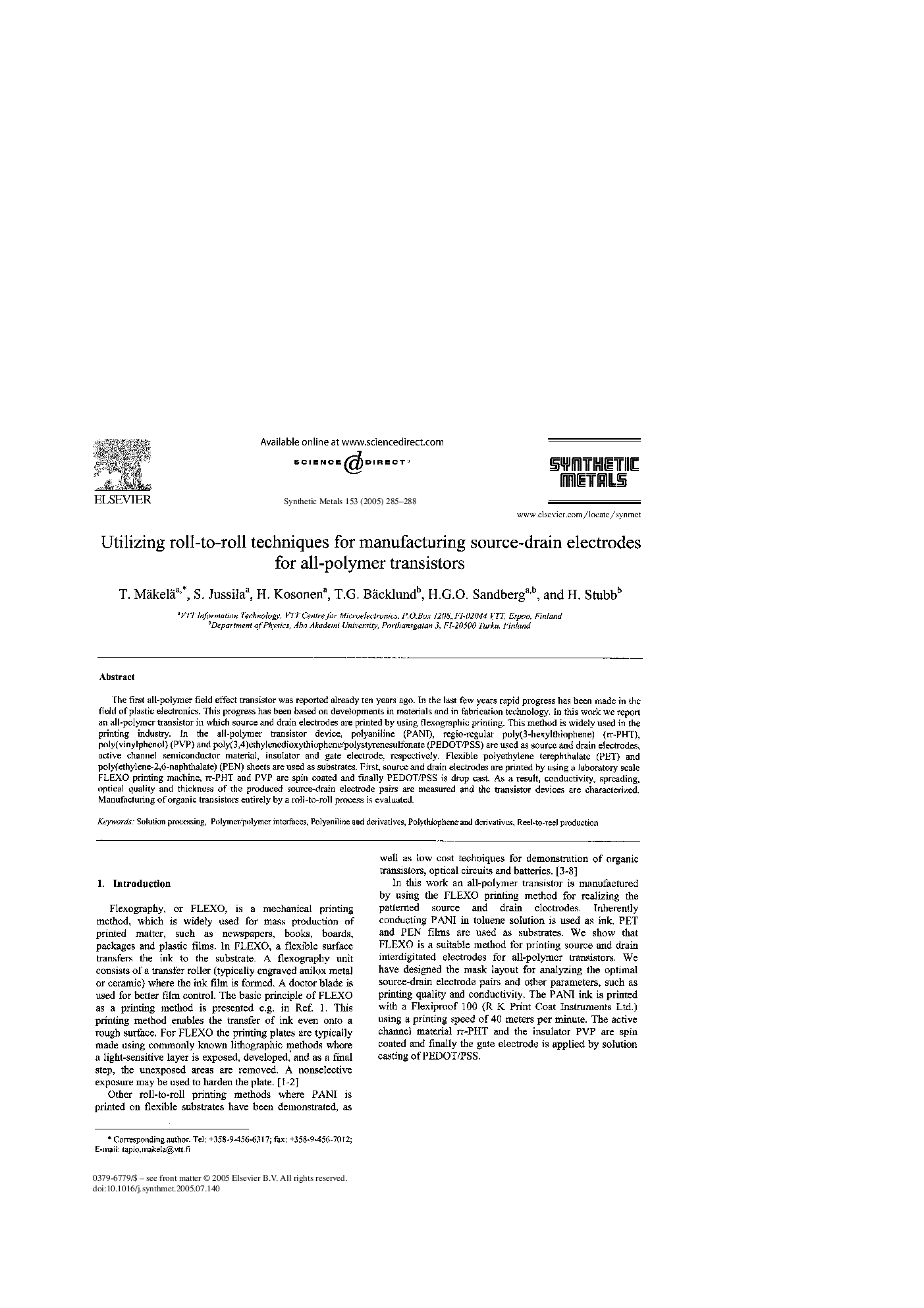| Article ID | Journal | Published Year | Pages | File Type |
|---|---|---|---|---|
| 9776358 | Synthetic Metals | 2005 | 4 Pages |
Abstract
The first all-polymer field effect transistor was reported already ten years ago. In the last few years rapid progress has been made in the field of plastic electronics. This progress has been based on developments in materials and in fabrication technology. In this work we report an all-polymer transistor in which source and drain electrodes are printed by using flexographic printing. This method is widely used in the printing industry. In the all-polymer transistor device, polyaniline (PANI), regio-regular poly(3-hexylthiophene) (rr-PHT), poly(vinylphenol) (PVP) and poly(3,4)ethylenedioxythiophene/potystyrenesulfonate (PEDOT/PSS) are used as source and drain electrodes, active channel semiconductor material, insulator and gate electrode, respectively. Flexible polyethylene terephthalate (PET) and poly(ethylene-2,6-naphthalate) (PEN) sheets are used as substrates. First, source and drain electrodes are printed by using a laboratory scale FLEXO printing machine, rr-PHT and PVP are spin coated and finally PEDOT/PSS is drop cast. As a result, conductivity, spreading, optical quality and thickness of the produced source-drain electrode pairs are measured and the transistor devices are characterized. Manufacturing of organic transistors entirely by a roll-to-roll process is evaluated.
Keywords
Related Topics
Physical Sciences and Engineering
Materials Science
Biomaterials
Authors
T. Mäkelä, S. Jussila, H. Kosonen, T.G. Bäcklund, H.G.O. Sandberg, H. Stubb,
